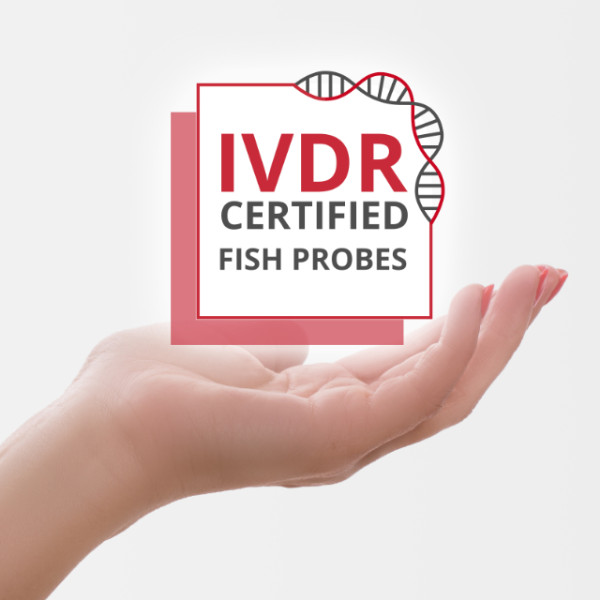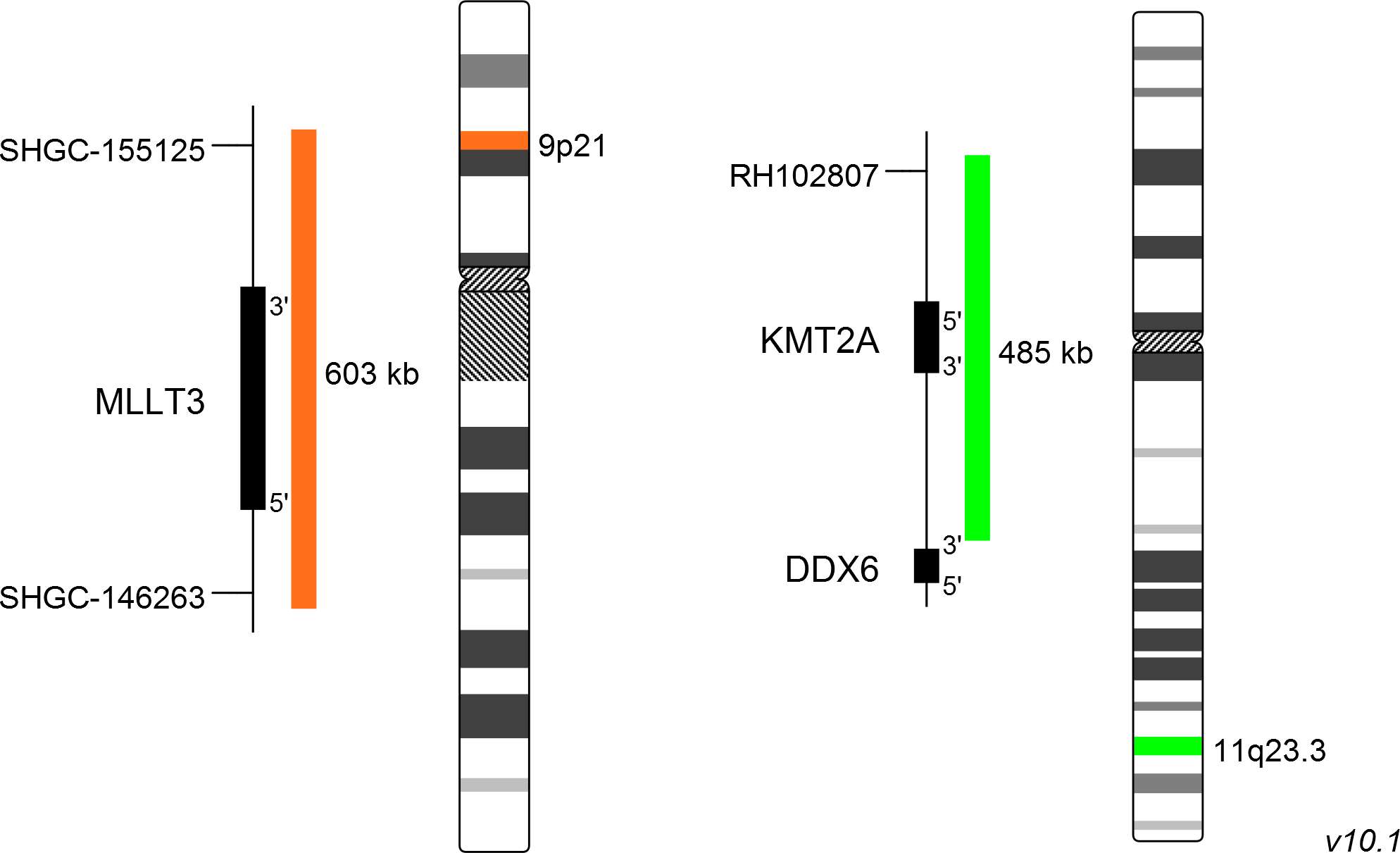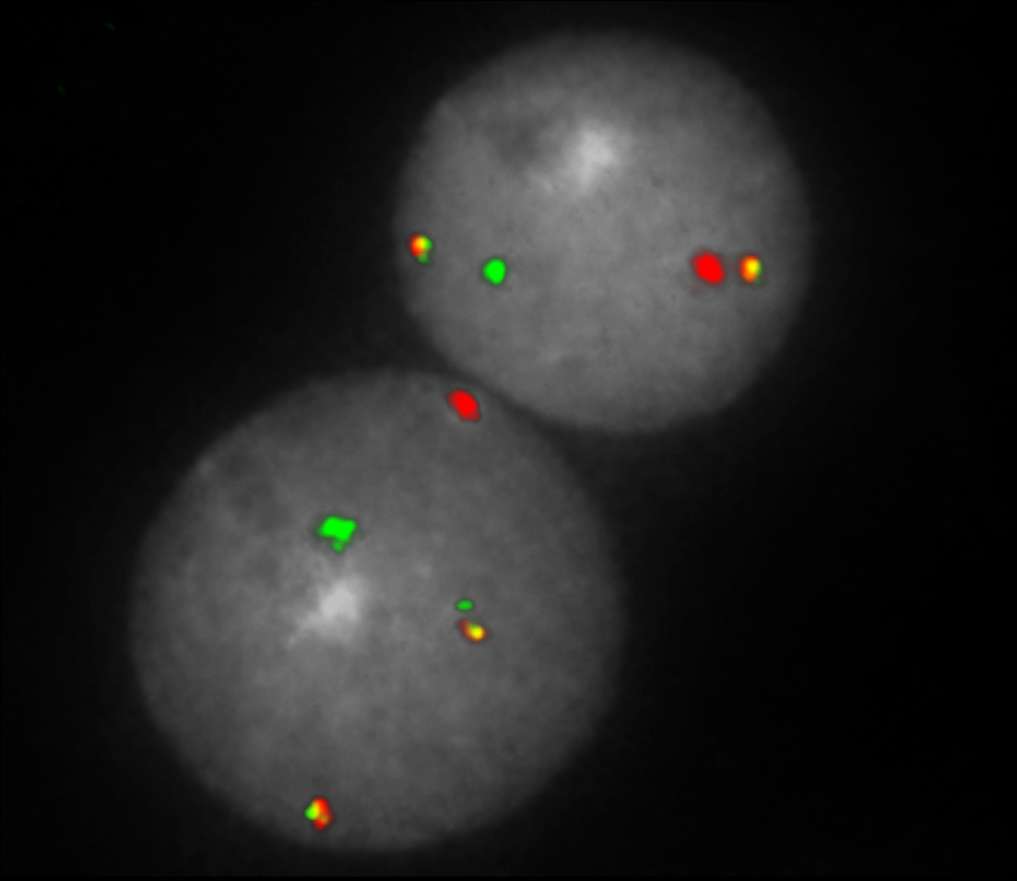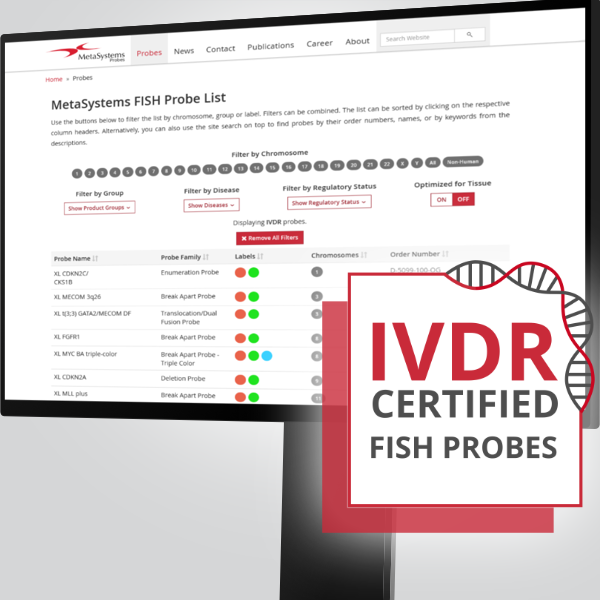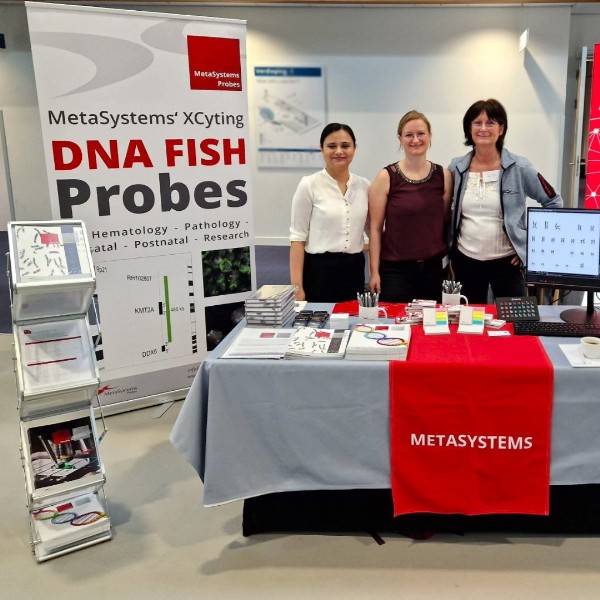The KMT2A (formerly MLL) gene, located on chromosome 11q23, is rearranged in about 10% of all acute leukemia patients. Most of them suffer from acute lymphoblastic leukemia (ALL) or acute myeloid leukemia (AML), only a minority shows mixed lineage leukemia which has given the gene its original name ´MLL´. In infants, the incidence of KMT2A rearrangements in leukemia is 70-80%. KMT2A encodes a nuclear protein with methyltransferase activity and is part of multiprotein complexes involved in the regulation of target genes essential during early development and hematopoiesis. Today, more than 80 translocation partners of KMT2A have been identified. Translocations are resulting in in-frame fusions between the KMT2A part N-terminal to the breakpoint cluster region and the respective fusion partners. The most common translocation partners in KMT2A associated leukemia are, in the order of their prevalence, AFF1, MLLT3, MLLT1, MLLT10, ELL and AFDN.
KMT2A is involved in about 3-5% of adult de novo AML cases and the most common aberration in this subgroup is t(9;11)(p22;q23) involving the MLLT3 gene. Pediatric patients carrying this aberration do have a favorable outcome which is comparable to AML patients without KMT2A involvement. FISH is described as a reliable method for the identification of t(9;11).
Clinical Applications
- Acute Lymphoblastic Leukemia (ALL)
- Acute Myelogenous Leukemia (AML)
